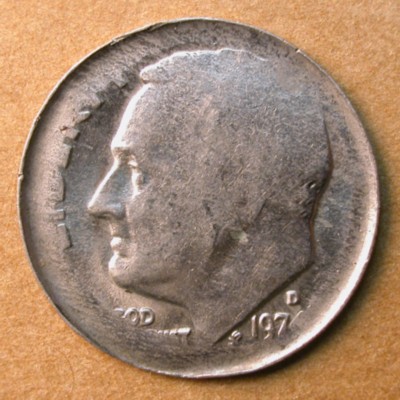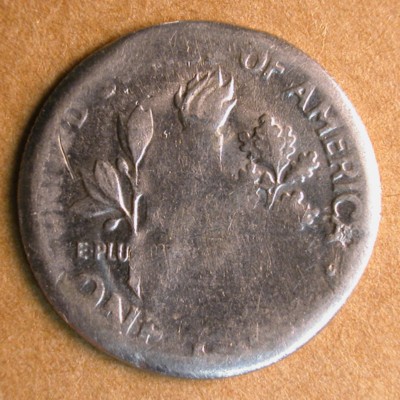Part V: Planchet Errors:
Bonding / Bonding Mill Errors:
Coreless or All Clad Coins:
Definition: “Coreless”, “all-clad”, or “solid-clad” coins.
This is a normally clad denominations struck on a solid, full-diameter, solid copper-nickel planchet. Such planchets may be derived from both clad coin metal strips if the former protrude beyond the core strip at the leading or trailing end of the merging strips as they enter the bonding mill. The two clad strips would then be pressed together to form a composite, bi-laminar copper-nickel strip.
A more likely scenario has one of the the clad strips protruding beyond the other two strips at the leading or trailing end of the merging strips. A blank punched from this protruding end would be composed of solid copper-nickel (75% copper and 25% nickel). A possible candidate is the dime shown below.


This 1974-D dime was struck on a very thin, solid copper-nickel planchet. It weighs 0.9 grams, which is over twice the weight of a normal clad layer (0.4 grams). The unstruck areas of the obverse face show rough linear striations that were almost certainly generated by the rotating descaling brushes that clean the coin metal strips before they enter the bonding mill.
Other, heavier candidate coins — both dimes and quarters — have been offered up as coreless specimens. However, some were definitely foreign planchets while others were “orphan” off-metal errors (see “off-metal/wrong planchet errors”).